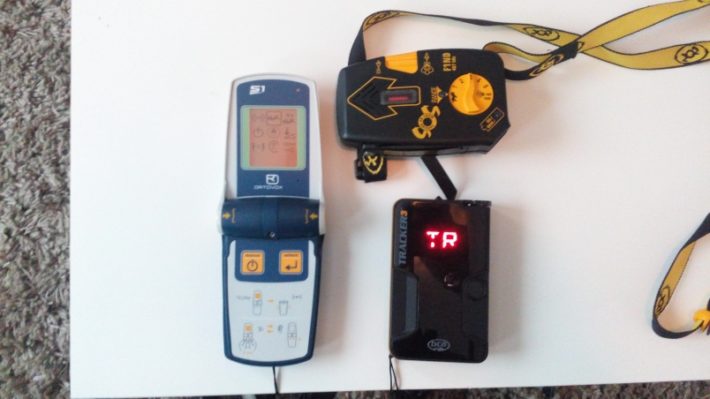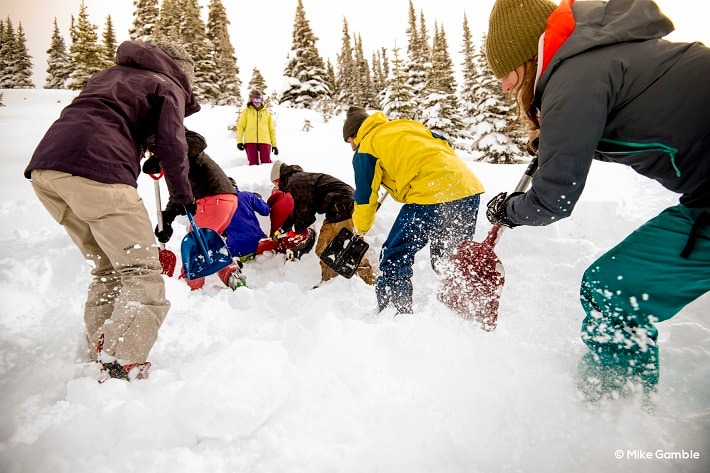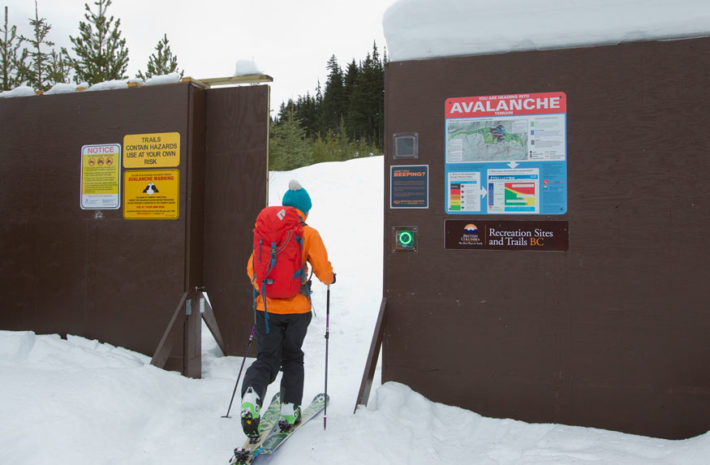|
The amount of consumer electronics carried by skiers and snowboarders on a daily basis has increased significantly in recent years. Smartphones, GoPros, cameras and GPS tracking devices all have their place, but when setting foot into the backcountry it’s the most important piece of electronics – the avalanche transceiver – that needs to do its job in order to keep you alive. All the other pieces of technology can cause avalanche transceiver interference affecting your beacon’s signal and search capability. This article goes into a bit more detail, but if you need a quick rule to follow, store your items at least 20cm away from your transceiver when transmitting and about 50cm when in search mode. Avalanche Transceiver Interference – Breaking it DownLet’s first take a look at how the transceiver works. When transmitting (“send” mode), each transceiver emits an electromagnetic pulse at the industry-regulated frequency of 457kHz. A transceiver in search mode receives that pulse and interprets it using the internal antennae, which is outputted to the searcher as a direction and distance. But the searching transceiver also picks up other signals that occur at the same frequency. These polluting signals are known as radio frequency noise. If there’s enough said noise in the 457kHz range, the interference can cause false signals and/or erratic readings on the searching transceiver’s display. The concept of radio frequency noise is much like the audible noise we encounter in a busy public space like a pub or bar. When you get there early before the crowds, you can have a conversation with a friend without the background noise posing a problem. Later on, however, the room is filled with other people around you talking and the music has probably gotten louder, hearing your friend across the table from you becomes all the more difficult. Active VS Passive InterferenceThere are two types of interference that can cause errors with a transceiver signal. Active interference comes from electronics that actively transmit frequencies such as phones, iPods, GPS devices, cameras, and headlamps, pretty much anything with a battery in it. It’s important to note here that Airplane Mode does not reduce the amount of radio frequency noise. The phone needs to be turned off and stored a sufficient distance away from the transceiver. Passive interference comes from sources that can partially block or warp the transceiver signal, usually in the form of metal or magnets. This includes but is not limited to shovel blades, aluminum foil, granola wrappers, magnets on the pockets of your jacket and your seasons pass with that Radio Frequency Identification (RFID) chip embedded inside. While these items don’t interfere as much as active or powered transmitters, it’s better to keep them inside your pack or the requisite distance from your transceiver. How to Reduce Avalanche Transceiver InterferenceThe best way to keep your transceiver doing its job properly is to keep all sources of active and passive interference as far from it as possible. That means storing your phone or camera in your pants pocket or pack, not in the chest pockets. Turn off all electronics completely that you’re not using, otherwise try to store it at least 20cm from the transceiver. If and when you do need to perform a search, remember to use the correct method and keep the transceiver outstretched from your body. If you suspect there’s interference and can’t quickly find the source, reduce your search strip widths to around 30 metres.
Want to know more about advanced avalanche search technique? Our ATL 2 course covers multiple-burial searches as part of its curriculum. For more technical analysis of transceiver interference, check out these industry blogs from Mammut and BCA By Vince Shuley
20 Comments
This is an Excellent & interesting post. I would definitely recommend it to others. We are here to inform you about our Professional services regarding novelty documents. So that we offer Editing services for Novelty Bank Statements, Novelty Credit Card Statements, Novelty Utility Bills & all types of other Novelty Documents.
Reply
Hi there! I read a lot of posts but the topic covered in this is so Amazing & helpful. I would like to thank you so much for sharing this post..
Reply
Your Blog is very Helpful and Professional. Thank you so much for sharing this informative post. I would share this Information with Others, and I want to inform you regarding our services to help you.
Reply
I read a lot of posts. But the topic you covered in this is the most comprehensive & helpful. I would definitely recommend it to others Person. Our designers have updated templates for all the major Banks of all the countries.
Reply
I’m here to appreciate you work This blog is very helpful for me.If you need help of Online Bank Statement editor thenour Professional Editor will help you quickly.
Reply
Thank you for sharing this valuable information with us. The topic that you covered in this post is very helpful and beneficial. You can get some professional help to modify PDF Bank Statements.
Reply
This post is Amazing and full of interest seriously. This is the most comprehensive & helpful.I would definitely recommend it to others. Thank You!
Reply
Very nice and interesting post. Thank you so much for sharing this information with us. It’s valuable. Do you need professional services related your Bank Statement PDF?
Reply
Your post is Amazing and Meaningful. I would definitely recommend it to others. Thank you for sharing this Important Topic. I like it very much.
Reply
Your post is Amazing and Meaningful. I would definitely recommend it to others. Thank you for sharing this Important Topic. I like it very much.
Reply
I am very surprised to visit your blog amazing. This topic is very helpful and important to me. So guyz, If you need quick and discreet professional help to edit your Scanned Documents you should contact us. You can Call us for professional help from anywhere, anytime. We are available 24/7hrs.
Reply
Hello guys! I’m here to thank you for sharing this beneficial information with us. I also recommend it to others. If you want to edit something in your Bank Statement, you can get some professional and discreet help from us. You can Call us for professional help from anywhere, anytime. We are available 24/7hrs.
Reply
Hello guys! I’m here to thank you for sharing this beneficial information with us. I also recommend it to others. If you want to edit something in your Bank Statement, you can get some professional and discreet help from us. You can Call us for professional help from anywhere, anytime. We are available 24/7hrs.
Reply
The topic in this post is so important and helpful for me. And many thanks for sharing this valuable information. I am surprised. Get some professional help if you want to Change something in your Bank Statement. You can Call us for professional help from anywhere, anytime. We are available 24/7hrs.
Reply
Hello Guys! I read a lot of posts but the topic covered in this is the most comprehensive & helpful. I am surprised. If you want to get help for Scanned Documents Editing, our designers can help you with any document. Contact us for further details. You can Call us for professional help from anywhere, anytime. We are available 24/7hrs.
Reply
Hello Guys! I read a lot of posts but the topic covered in this is the most comprehensive & helpful. I am surprised. If you want to get help for Scanned Documents Editing, our designers can help you with any document. Contact us for further details. You can Call us for professional help from anywhere, anytime. We are available 24/7hrs.
Reply
Very Nice and interesting post. I would share this Information with Others. If you want to get help for Scanned Documents Editing, our designers can help you with any document.
Reply
We are here to thank you so much for sharing this helpful information with us. I would like to share this information with others.
Reply
This post is amazing and much interesting to me as you cover very important topic in this post. So guys, If you guys require professionalservices regarding novelty documents like Novelty Bank Statements, Novelty Credit Card Statements, Novelty Utility Bills & all types of other Novelty Documents, please contact us at given links and number:
Reply
7/9/2021 10:50:09 pm
Hi there, I found your website by means of Google while looking for a similar matter, your site got here up, it looks great. I have bookmarked it in my google bookmarks.
Reply
Leave a Reply. |
AuthorWe gather articles from around the globe. Archives
January 2024
Categories |
Location |
|




 RSS Feed
RSS Feed